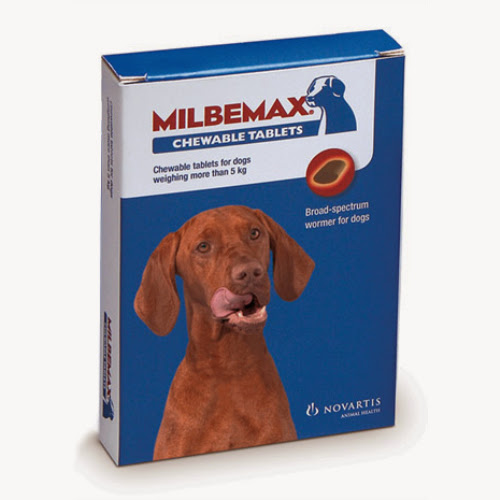These are the worming tablets we use.
Now summer is here, Lottie will be spending a lot more time in the garden, on long summer walks and coming in contact with lots more dogs. As a result of this it can cause your dog to be more susceptible to worms. There are five different types of worms and below I will summarise each one along with the symptoms that your dog could display when they have the infection. Your dog will display different symptoms depending on the type of worm infection they have so it's really important to recognise the signs and apply the right dog worming treatment when necessary.
Tapeworm
Tapeworms looks like flat ribbons and are made up of small segments. These segments can break off and be passed in your pet’s faeces. If you suspect your dog may be suffering from tapeworm, look closely at their faeces as these small segments can be visible and could look like grains of white rice. Signs your dog may have tapeworms include:
- Gradual weight loss
- Itchy bottom
- Diarrhoea
- Dull coat
- Extra licking of anal area
Roundworms are the ones that look most worm like in their appearance compared to the other four. They can look like a piece of cooked spaghetti and can grow up to several inches long. A warning is that roundworm can actually be passed between dogs. It is quite common for puppies to be born with roundworms as they contract them from thief mothers.
Signs your dog may have roundworms include:
- Vomiting
- Diarrhoea
- A ‘pot belly’
- Loss of appetite
- Tiredness
Hookworms are similar in appearance to roundworms, but have teeth at one end. The teeth allow them to ‘hook’ onto your dog’s intestine. Hookworms are parasites which survive by sucking blood from your pet, which could put your dog at risk of anaemia.
Signs your dog may have hookworms include:
- Constipation
- Dry cough
- Dull coat
- Weight loss
- Stomach ache
As the name suggests, heartworms affect a dog’s heart. They are transferred to dogs by infected adult female mosquitoes. In most cases, by the time your dog displays any of the symptoms associated with heartworm, the disease has progressed to a very advanced stage. Fortunately, the infection can be picked up in routine blood tests.
Signs your dog may have heartworms include:
- Tiredness
- Weight loss
- Breathing problems
- Dull coat
- Enlarged abdomen
Like hookworms, whipworms are bloodsucking parasites. However, these are particularly difficult to identify as they can’t be seen like the other types. Your dog is most likely to contract whipworms by coming into contact with other dogs’ faeces. This could be as simple as your pet licking his paws after walking on ground where infected faeces lie.
Signs your dog may have whipworms include:
- Blood in faeces
- Weight loss
- Tiredness
- Licking of stomach area
- Gas
Although not as widespread, lungworms can also affect dogs and are emerging as a more common problem in many dogs, particularly in the UK. Dogs get lungworm by eating larvae found in infected snails, slugs or frogs. They can also accidentally eat infected tiny slugs if they are on a toy or their fur. The lungworm larvae then grow inside the dog and the adult lungworms move through their body to live in their heart and blood vessels. Dogs can’t pass the disease directly from dog to dog but they will pass the larvae in their waste. This then infects more slugs and snails who are eaten by more dogs, so the disease can rapidly spread within the dog communities.
Signs your dog may have lungworms include:
- Coughing
- Breathing problems
- Reluctance to exercise
- If a dog gets a minor injury, like a small cut, it might bleed for longer.
- Abnormal blood clotting.
If you suspect your dog is suffering from any type of worm infection it is important to seek professional advice from your veterinary surgeon.
It's also advised that a monthly flea treatment is given to prevent your dog from contracting fleas.
This is the flea treatment we use.
Jessica and Lottie

We're participating in the Pet Parade Blog Hop hosted by Rascal and Rocco, and co-hosted by Jan's Funny Farm, Basil the Bionic Cat, Barking from the Bayou, and Love is being Owned by a Husky! - thanks guys!



Great info! I love worms! Well not really, they are gross but I love parasitology and somehow find it fascinating. Most treatments will only prevent against a combination of certain worms. I've never seen one that protects against all of them. And the only type of worm you'll probably ever see with your bare eyes is a tapeworm. Everything else is diagnosed with a microscope, exception being heartworms of course. Shiner just had a case of tapeworms, but thankfully those aren't too serious.
ReplyDelete